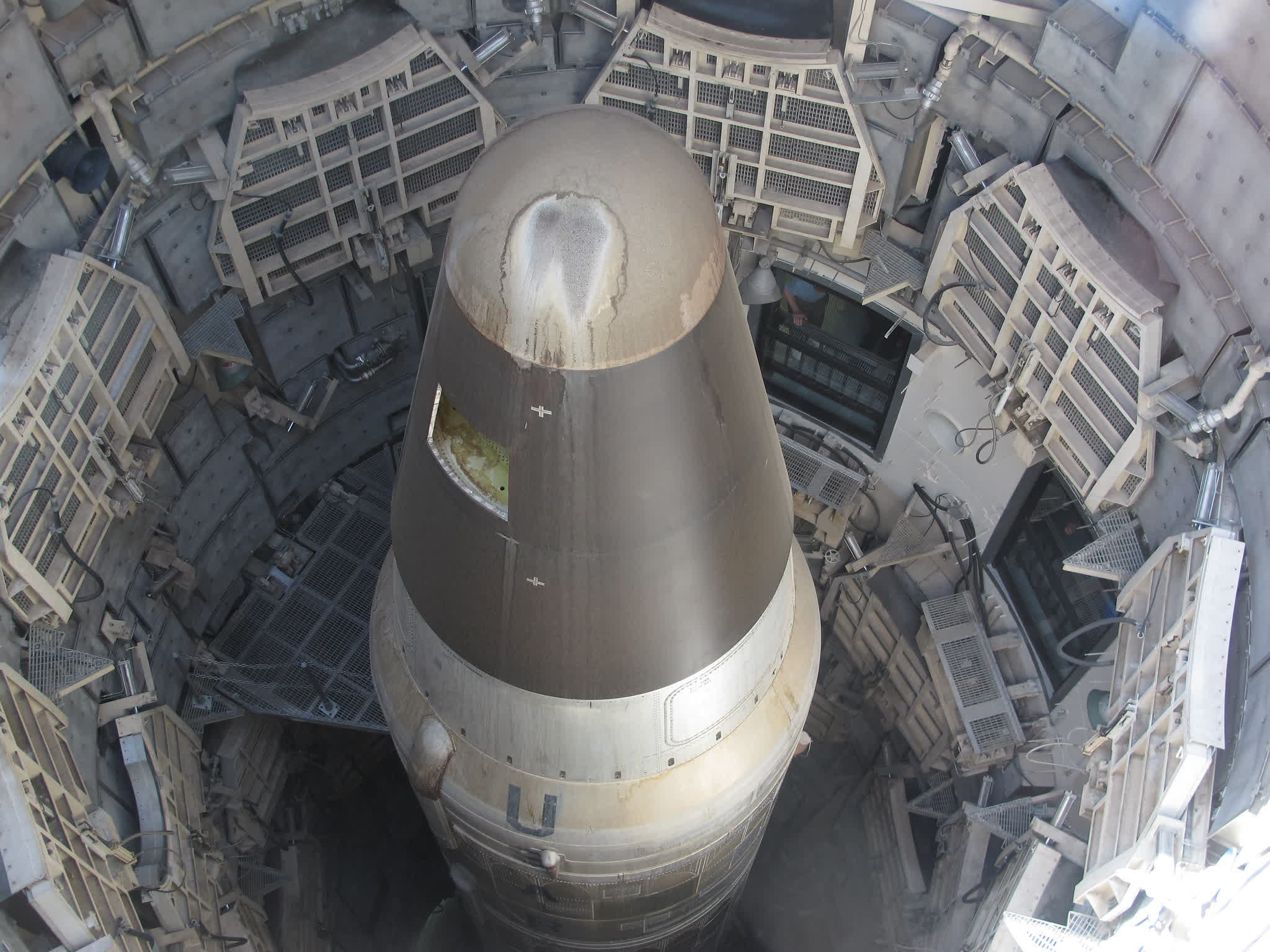

US Air Force pays $75.5 million for 25,000 sq. mile wireless network to protect...
source link: https://www.techspot.com/news/97839-air-force-pays-755-million-25000-square-mile.html
Go to the source link to view the article. You can view the picture content, updated content and better typesetting reading experience. If the link is broken, please click the button below to view the snapshot at that time.

US Air Force pays $75.5 million for 25,000 sq. mile wireless network to protect its nuclear silos, share data
The world's largest wireless ad-hoc network
By Rob Thubron March 7, 2023, 5:17 AMIn brief: It's a sad fact that we live in troubling times, as shown by the Doomsday Clock moving to 90 seconds to midnight, the closest we've ever been to reaching total destruction. As such, the US Air Force is ramping up efforts to protect its nuclear missile silos, and has just awarded a $75.5 million contract to New York-based firm Persistent Systems for the world's largest wireless ad-hoc network.
Persistent Systems will roll out its Infrastructure-based Regional Operation Network (IRON) for The Air Force Global Strike Command, creating a secure unified network for 400 operational Minuteman III intercontinental-range nuclear missile silos located across the US, writes Interesting Engineering.
Serving the US Air Force's Regional Operating Picture (ROP) program, IRON will cover a 25,000-square-mile geographic area, making it the world's largest wireless ad-hoc network. It connects MANET edge networks, which allow airmen to share voice, video, chat, sensor, and GPS data, into one unified Battlespace Awareness Network for increased situational awareness.
Around 700 IRON systems will be installed across this massive area. They use an easy-to-deploy Integrated MANET Antenna System on fixed towers and poles, connecting 75 operation centers and over 1,000 Security Force vehicles.
"US military bases can sprawl tens of thousands of square miles, and as it stands now, there's no dynamic, high-bandwidth way for headquarters staff to track, and reliably remain in contact with, the security personnel patrolling this vast area," said Adrien Robenhymer, Persistent's VP of Business Development. "Should personnel run into problems in the field, they wouldn't have effective support from an operations center."
With ROP in place, military personnel on a missile field will be able to maintain constant communication through the towers to an Operations Center (OC), while staff in the OC will be able to follow the movements and know the precise location of security forces on a digital map. ROP will initially be rolling out across Malmstrom, Minot, and F.E. Warren Air Force Bases.
Beyond Situational awareness, IRON facilitates a fully digital battlespace that links multiple weapon systems and programs in a unified network. "It provides the foundation on which a true Joint All Domain Command and Control (JADC2) system could be built," said Robenhymer.
IRON systems are already being deployed across the missile fields and will continue to be deployed across the next 36 months.
In other recent military news, Shipbuilder Austal USA delivered a ship to the US Navy last month that can operate for up to 30 days at sea without human intervention, another step in the armed forces' shift toward more automation.
Recommend
About Joyk
Aggregate valuable and interesting links.
Joyk means Joy of geeK

